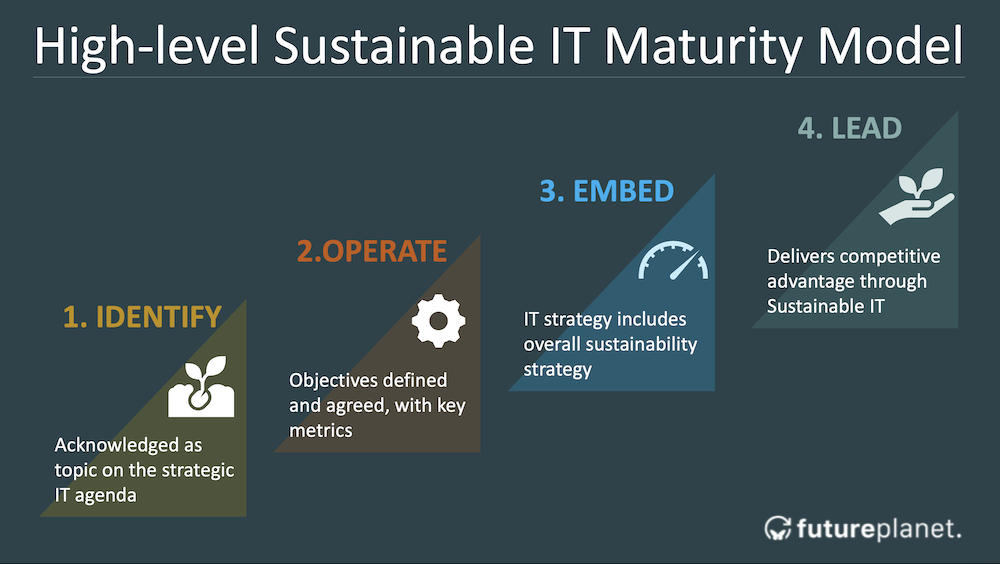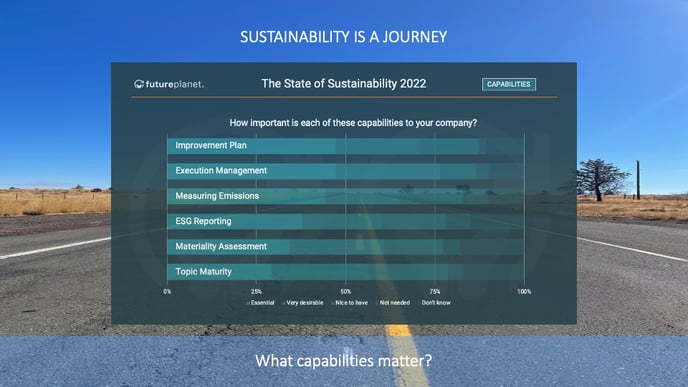
Uncovering and Reducing Hidden Co2 Emissions (10 Actions)
It is everywhere we look, part of our everyday lives – but we don’t see it. It is so pervasive we don’t even notice it is there, but we would flounder without it. I know for sure that you personally have used it today.
Turn around, and it is there.
It is at the centre of our personal lives. Without it businesses could not exist, and economies would fail. It represents a $9Tn market. If it was a country it would be third largest in the world after the United States and China. And today it represents about 4% of global CO2 emissions.
The “it” in this case is of course IT – Information Technology. IT is behind the device you are using right now to read this blog, and powering the data centre that runs this website. But here’s the thing: –
Even though IT is so central to businesses, and such a large source of global emissions, only 18% of enterprises have a Sustainable IT strategy. That is fewer than 1 in 5. I know you did not need the lesson in arithmetic – but it is a remarkable statistic.
The good news is that there are many opportunities to save emissions, reduce organisational risk, and save money through Sustainable IT.
According to a recent Cap Gemini report, organisations that have scaled up their sustainable IT use have achieved on average a 12% cost reduction and a 13% improvement in customer/client satisfaction. Implementing one of the most basic Sustainable IT practices – implementing auto switch-off of hardware/features, can alone deliver up to 14% in operational cost savings from energy reduction, while also reducing carbon emissions.
But it goes beyond emissions in your company. Sustainable IT includes the whole value chain, the reduction in that elusive Scope 3 measure, the economic savings through the implementation of circular economy principles and cutting down on waste. It can strengthen your business with better supplier relations and stronger risk management and corporate governance. What CIO doesn’t want that?
The Future Planet roadmap for Sustainable IT suggests that you should consider 5 complementary journeys.
- Energy & GHG Scope 1,2 Emissions
- GHG Scope 3 Emissions Management
- Circular & Waste Management
- Sustainable IT Procurement
- Risk & Governance
I will return to each of these journeys in separate dedicated blog posts, but here are a few statistics worth considering, and thinking about how they might apply in your business.
- Enterprise IT represents 8.4% of global CO2 emissions
- By 2025, data centres will consume 20% of the world’s power supply (IEA)
- 5B cellphones will become e-waste this year (WEF)
- Management of third party spend can release savings of between 7-12%. (PwC)
- 50,000 companies in the EU have to comply with new ESG legislation
So, what do you do next or first? Of course that depends on the maturity of the IT organisation in the context of sustainability. There are 4-stages of maturity: Identify, Operate, Embed and Lead.

Your maturity level will help you determine where to start on the 10 actions here that can guide to you improve the tactical and strategic impact of the IT organisation.
- Align Sustainable IT strategy to business strategy via Materiality Assessment
- Start S-IT awareness / education program including leadership
- Assess the environmental / societal impact of IT
- Establish lifecycle carbon footprint accounting for all hardware
- Implement Waste / Circular optimisation program
- Establish disclosure and sustainability reporting for IT operations
- Publish your objectives, initiatives and outcomes
- Implement core sustainable procurement practices
- Mandate sustainability disclosure for IT vendors
- Advocate circular economy principles for vendors
When you have figured this out you might consider that Sustainable IT might be a little more strategic for the CIO who is as a true part of the Chief Sustainability Officer. It might not be restricted only to IT Sustainability per se and might serve as a sustainability leader for the business and the whole value chain. No point in keeping the kitchen clean, if you don’t serve any meals. Just food for thought. 🙂

